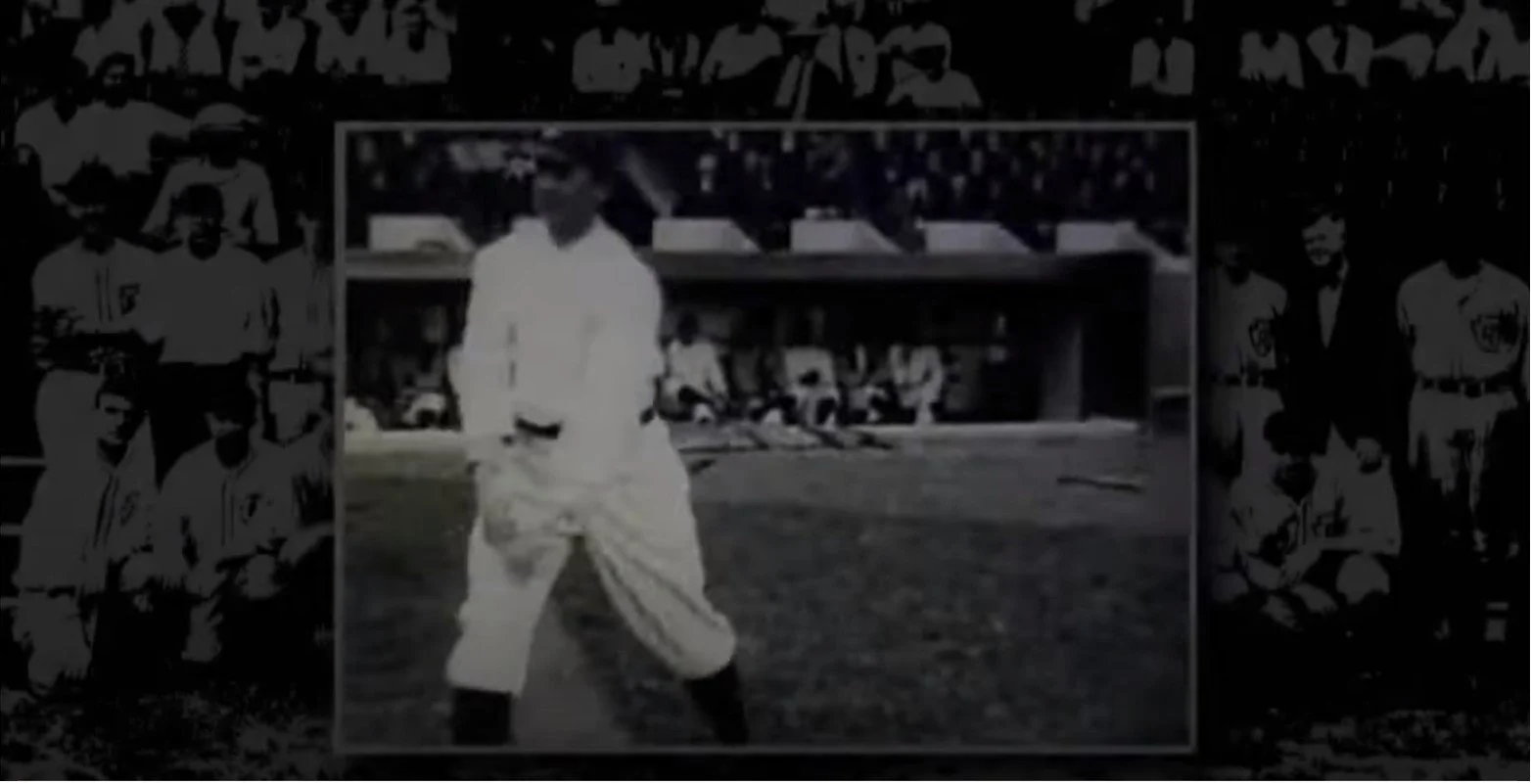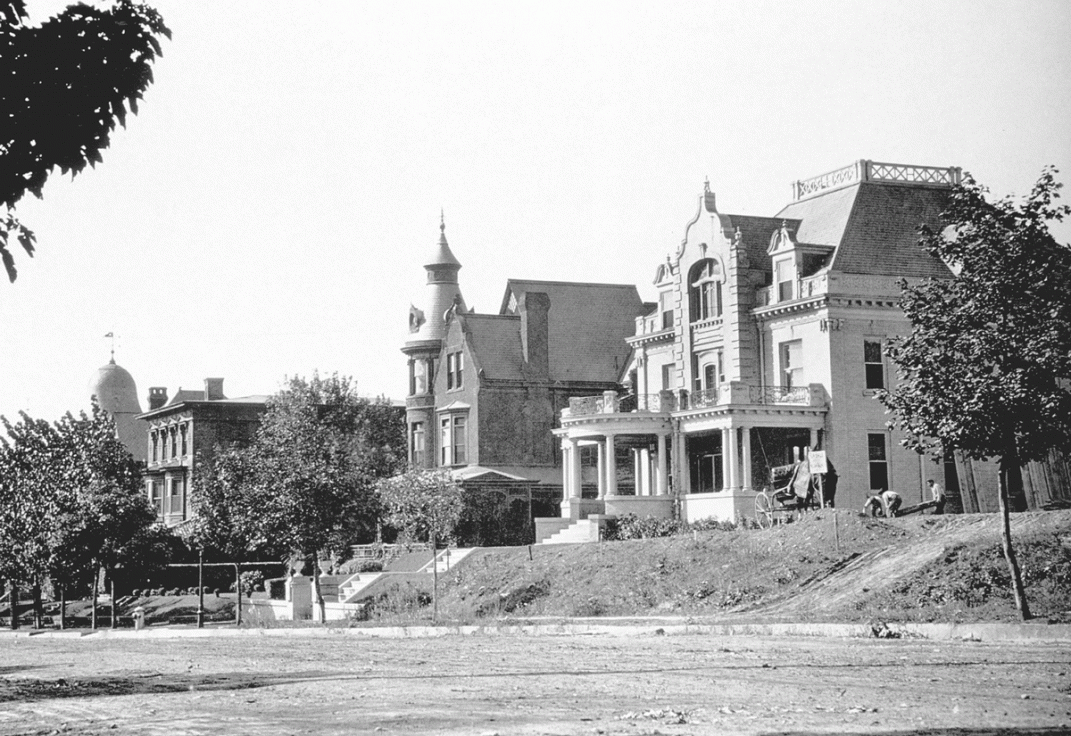
History
The Centre Turnpike (now Centre Avenue or Route 61) was completed from Reading to Sunbury, PA in 1809. However, residential expansion to the northwest of downtown Reading was hampered by “the Great Hollow,” a steep ravine which ran from Front and Washington Streets to 5th and Buttonwood.
In the late 1860s, several improvements in the northwestern area of Reading increased development interest. Around 1868, a tunnel was built to divert water from the Great Hollow and the ravine was filled in. In 1884 the Philadelphia and Reading Railroad built the fashionable “Outer Station” on North 6th Street, immediately north of the Askew Bridge. In that same year, the Reading City Passenger Railway Company established a horse-drawn trolley line which ran up North 6th Street from Penn Street to Robeson Street, continuing west on Robeson to a station house at Charles Evans Cemetery.
During the 1870s, Centre Avenue became a fashionable address for residential development by the wealthy new industrialists of Reading. Many residences featured large, freestanding “country” mansions with handsome carriage houses. By the late 1880s, trolley service had been established on Centre Avenue as far north as Charles Evans Cemetery, and on Windsor Street, connecting the Centre Avenue and North 6th Street lines. These proved to be a stimulus for even more development. For decades, the neighborhood brimmed with social activities such as dinner parties, card parties and various other functions hosted by society matrons.
The greatest building boom in the District took place between 1900 and 1910 when more than half of the buildings were constructed. Most homeowners on the major streets held managerial or professional positions in the city. The majority of residents in the more modest homes along Rose Street and Madison Avenue were industrial workers, tradesmen and clerical workers. By 1920, most of the residential development in the Centre Park District had been completed. Buildings constructed after 1920 were primarily large residences, churches or institutional structures.
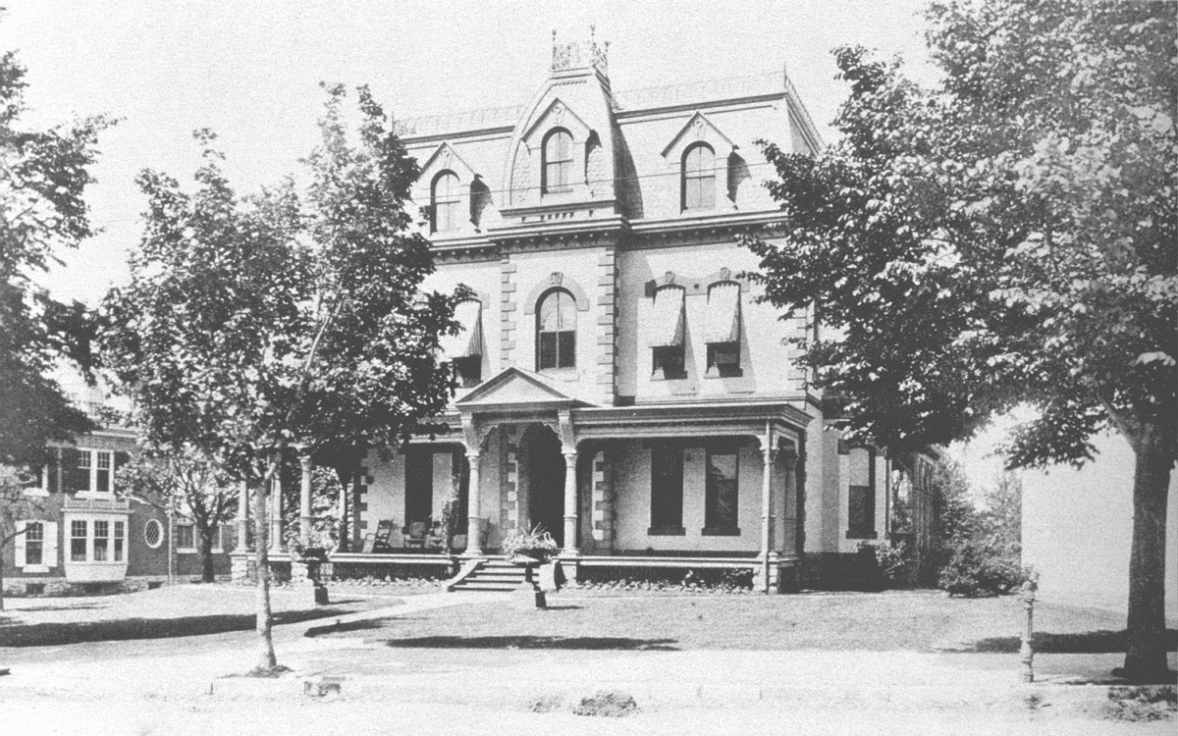
The Overlook Mansion at 620 Centre Avenue is a classic example of 1870s Victorian-era Second Empire architecture.
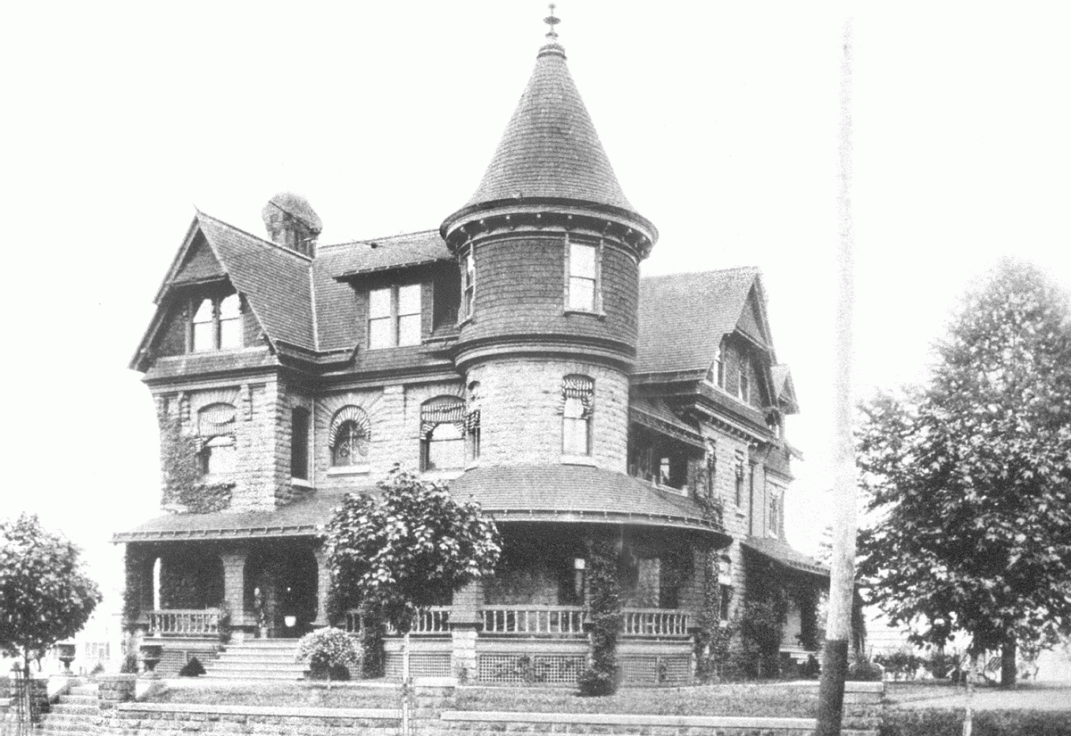
The John Barbey Mansion was located at 725 Centre Avenue, built in 1886, it was designed by famed Philadelphia architect Frank Furness.

The Wilhelm Mansion at 730 Centre Avenue was built in 1877 in the Gothic Revival Style.
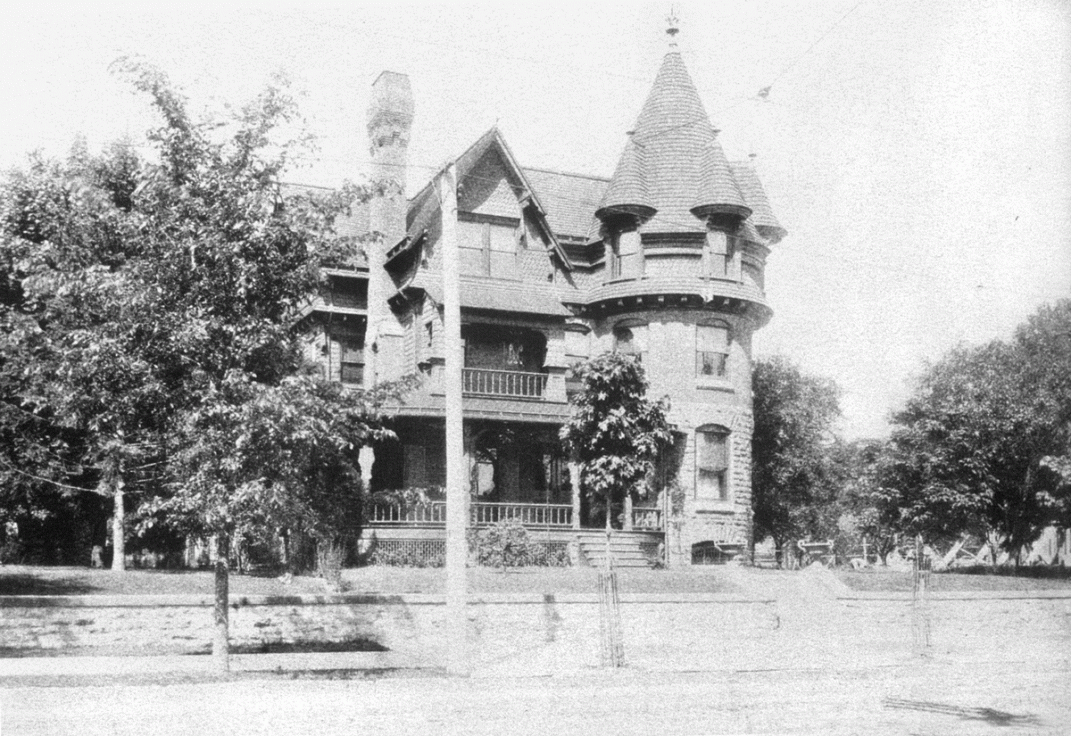
The Harbster Mansion at 742 Centre Avenue, built in 1888, was also designed by famed Philadelphia architect Frank Furness.
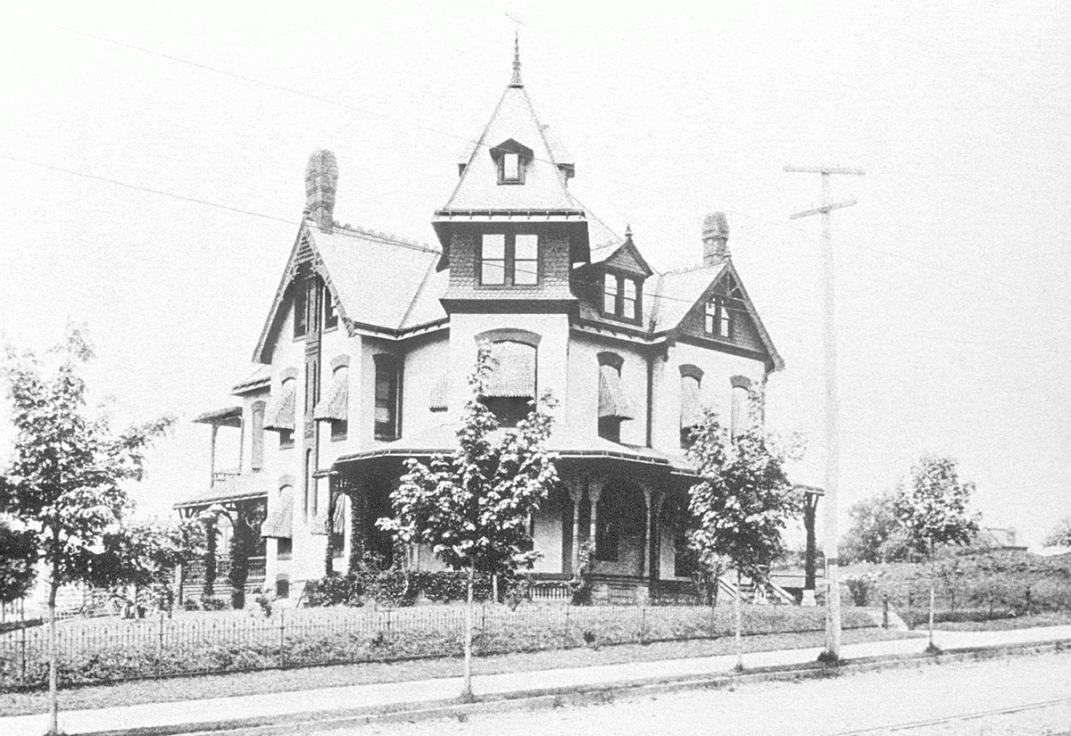
The Home of Ferdinand Winter, 900 Centre Avenue, was built in 1890.
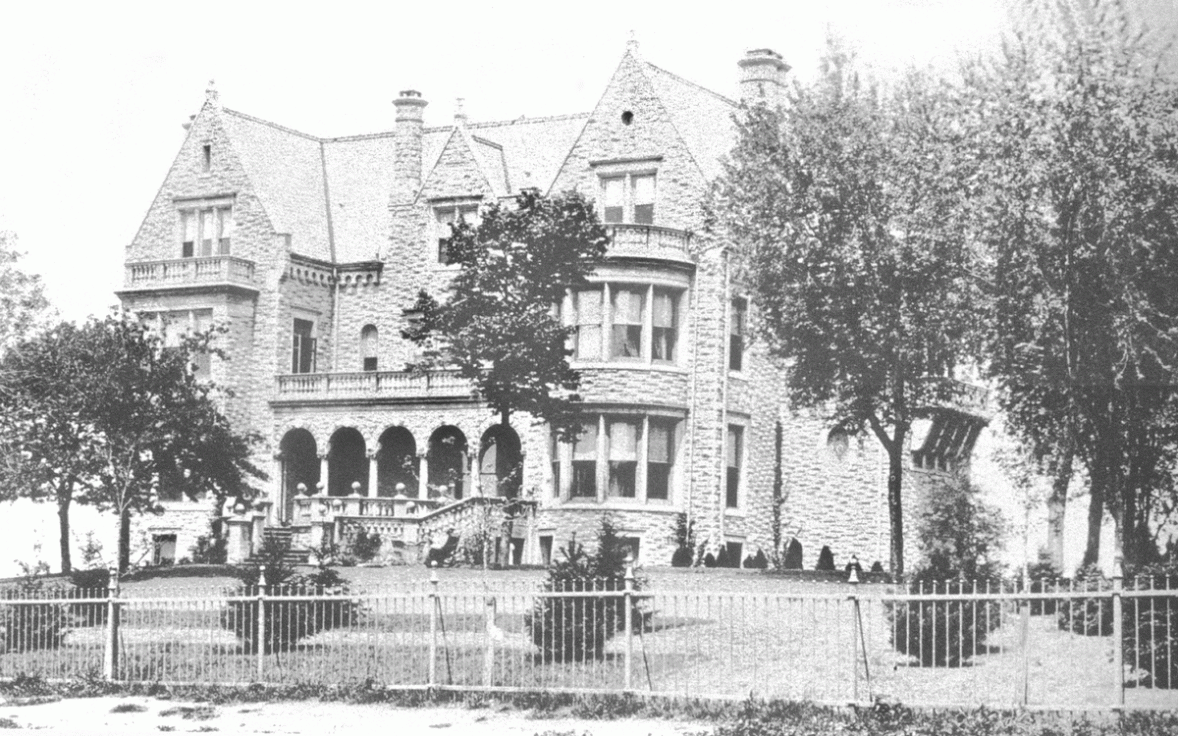
The Stirling Mansion, 1120 Centre Avenue, was designed by renown Philadelphia architect Theophilus Parsons Chandler, Jr. for the J.H. Sternbergh Family. Construction commenced in 1891 and was completed in 1894.
Organization History
The Centre Park Historic District was established on October 27, 1982. Situated in the northwestern part of the City of Reading, PA, the District is generally located between Centre Avenue to the west, North 5th Street to the east, Charles Evans Cemetery to the north, and the Lebanon Valley Railroad to the south. The name of the District is derived from Centre Park, an attractive focal point for the neighborhood. The Park is situated on the south side of Douglass Street between Centre Avenue and North 4th Street.
Almost entirely residential in character, the Centre Park Historic District is comprised of 840 structures. It features a wide variety of architectural styles and high levels of quality craftsmanship which are evident in even the more modest homes. Most of the residential development occurred between 1895 and 1915 when the trolley service made the neighborhood one of Reading’s first suburbs.
Artifacts Building
This two-story building was built in 1927 for the Memmert Tire Service, Inc. as an automotive service station and garage. It remained an automotive related facility, including a Studebaker dealership for the next 33 years. The bay at right served as entrance to the garage area. The series of three display windows were used to showcase the latest innovations in tires. The upper level facade recesses once featured sign panels, advertising tires and services. In 1960, the building became the home of Fairmore Music Co,. dealer in jukeboxes and cigarette vending machines. Brown’s Transfer and then Tom Weigand Photography were later tenants.
The building exhibits some elements of the Arts and Crafts style. This is particularly evident in the large, but light and simple brackets supporting the pent roof over the display windows. Interior features, such as the fireplace with its decorative tile and the stucco wall treatment, are also in keeping with this style.
Vintage Reading of Old
Vintage Movie, Good Old Days, Reading, PA
Vintage film of Reading Pennsylvania. The 1940's and more. Carsonia Park, trolley route, Penn Street downtown Reading
The Berks Time Train
Mike Reinert features the Inn at Centre Park which is located at 730 Centre Avenue.
Reading Baseball History
Lauer's Park's history in Reading baseball lore has stood the test of time.
Centre Park Headquarters Location
In 1992, the Centre Park Historic District, Inc. began renting space in the back of the building for the Artifacts Bank. When the building was put up for sale in 2003, the Board of Directors decided to acquire the building if funding could be secured. Acquisition of a building was considered a critical step of the Strategic Action plan adopted by the Board the year before. One of the key strategies that came out of that plan was the desire to expand the organization’s influence in the community, to be a resource for historic preservation education and a pro-active advocate for significant quality of life issues that affect the neighborhood as well as the City of Reading. The facility envisioned would provide: a permanent home for The Artifacts Bank, a preservation resource center, a neighborhood community center for meetings and educational seminars and an office for the administrative functions of the organization. With financial aid from the City of Reading and Preservation Pennsylvania, the Centre Park Historic District, Inc. purchased the building in March of 2005.
Interior work began immediately with the removal of an old boiler, unwanted walls, dropped ceilings, paneling, etc. This work was followed by the restoration and painting of the original stucco wall treatments, addition of the vestibule, new electrical wiring, ceiling fans and period appropriate lighting (salvaged from Whitner’s Department Store) in the front room. In 2007, work was done to replace the roof and to restore the front façade to its 1927 appearance. The stucco-like permastone veneer was removed with funding through the City of Reading’s Façade Improvement Grant Program. The restoration work also included re-creation of the stepped parapet roofline and the tile medallions.




